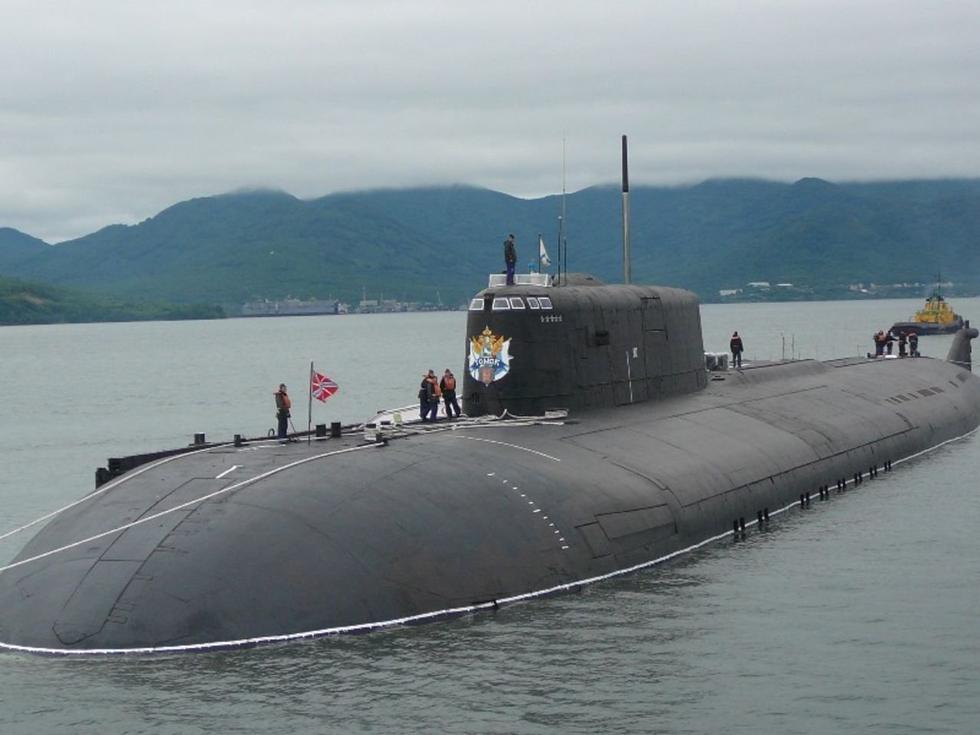G Balachandran
On November 5, 2018 the PMO announced that the Indian “Strategic Strike Nuclear Submarine (SSBN) INS Arihant” returned from its first “deterrence patrol”. Highlighting this achievement, Prime Minister Shri Narendra Modi asserted that “people of India aspire for a ‘Shaktimaan Bharat’ (Strong India) and building a New India.”
Conventionally nuclear-powered submarines are classified as either SSN (Ship, Submersible, Nuclear) or SSBN (Ship, Submersible, Ballistic, Nuclear). The difference between an SSN and an SSBN is that, while both are nuclear-powered, an SSBN carries nuclear-armed ballistic or cruise missiles (specifically, Submarine Launched Ballistic Missiles (SLBM) or Submarine Launched Cruise Missiles (SLCM)). Currently only five countries have operational SSN/SSBNs. Reports suggest that India has opted to go for SSBNs directly without having to first build SSNs, i.e. the design is for a ballistic missile submarine, since it would not be possible to reconfigure a SSN into a SSBN.
The Prime Minister hailed the achievement, “which puts India among the handful of countries having the capability to design, construct and operate SSBNs”. While the press release of the government was silent on many details of the “deterrence patrol” such as the number of days it was on patrol, how many of these days it was entirely in the submersible mode, whether and what types of missiles it carried etc. given the professional nature of Indian navy, one can be assured that the “deterrence patrol” was a SSBN patrol and not SSN patrol. Some press reports suggest that Arihant was carrying the K-15 missile which has a range of 750 kms and the duration of the patrol was 20 days.
Notwithstanding the absence of details, this was a significant technological achievement, which needs to be analysed in the proper perspective. Conventional submarines, constrained by their fuel requirements and the need to surface regularly either to recharge batteries or replenish oxygen (efficient ‘scrubbers’ recycle the air in the boat) have limited underwater endurance – even if they incorporate auxiliary AIP (Air Independent Propulsion) systems – have limited role for long range patrols, sea lane control and power projection purposes. Such operations ideally require a submarine powered by a nuclear steam turbine allowing it much greater endurance and enabling it to be submerged for much longer periods greatly increasing its tactical and strategic capabilities.
Hence the completion of the patrol by Arihant will be a significant factor in influencing India’s future options in implementing its nuclear doctrine. As Prime Minister Narendra Modi said, the event “transformed the scientific achievement of nuclear tests into establishment of an immensely complex and credible nuclear triad, and dispelled all doubts and questions about India’s capability and resolve in this regard.”
It must be emphasized that a number of other important factors have to be taken into account before the full value of having SSBNs is realised.
First, the command and control requirements for a SSBN have to be tested in adverse operational conditions i.e. there should be secure long-range communication with the submarines even when it is completely submerged and under adverse sea conditions. Presumably this aspect has been proved to be satisfactory in this patrol.
Second, even after this successful SSBN patrol, for a true SSBN role Arihant will have to incorporate ICBMs or at least IRBMs in the top range limits. India is yet to have a fully operational land-based ICBM. A submarine launched ICBM is a long way off and till then, the Arihant will have only a limited role as a nuclear deterrent force.
Third, it will be necessary to have at least, at a minimum, three such operational SSBNs to be assured of at least one such vessel being continuously in operation in any one area of concern to India. If the Indian strategic requirements require that such continuous patriots/presence is required in more than one area, the number of SSBNs in the Indian inventory will have to be necessarily much larger.
Fourth, the need for an effective utilization of the SSBN capacity will require that the necessary numbers of SSBNs need for effective use be built in the shortest possible time. While the true cost of the Arihant program has not been made public, speculative estimates range from Rs. 3,000 crores to Rs. 30,000 crores, the actual cost might be in the mid-four figure range, say around Rs. 4000-5000 crores. Apart from the costs involved, one has to take into account the infrastructure available in India for such sophisticated engineering manufacturing expertise and the financial resources that will be available for defence in the coming years given the other acquisition programmes in the pipeline.
Finally, the Indian political establishment has to make up its mind about the role of the SSN/SSBN. Placing the patrol in perspective, Prime Minister Narendra Modi underlined that “India has put in place a robust nuclear command and control structure, effective safety assurance architecture and strict political control, under its Nuclear Command Authority. It remains committed to the doctrine of Credible Minimum Deterrence and No First Use, as enshrined in the decision taken by the Cabinet Committee on Security in its meeting chaired by the then Prime Minister Shri Atal Bihari Vajpayee on January 04, 2003.”
Much has been made of the sea-leg of the triad as some option guaranteeing the availability of a second-strike capability. Unless there are constraints on India’s nuclear force expansion because of the number of warheads or missiles that India can produce and field due to either the lack of availability of sufficient nuclear explosive fuel (enriched uranium or plutonium) or arms limitation treaties entered into by India, the costs associated with a SSBN programmemay not fully justify a SSBN force. This is due to the limited number of missiles that a SSBN can carry that guarantee a true second-strike capability, unless, of course, the assured second-strike requirements are in the very low two-digit figures.
Let us assume a SSBN can carry 8 missiles. The assured availability of these 8 missiles on constant patrol will require a fleet of at least two-three SSBNs, entailing a capital cost of at least Rs.10,000 cr. Both the costs associated with procurement of SLBMs and annual maintenance of SSBNs is far more than the costs associated with ICBM programmes. An ICBM cost may range from Rs. 50-100 cr. If an enemy’s first strike has a success rate of say, 85%, an ICBM force of 100 would assure with a probability of more than 97% that more than 8 ICBMs will survive such an attack. Such a force would cost much less than Rs. 1000 cr. The assured availability of surviving ICBMs increases at a faster rate than the increase of ICBM force level.
In short, if there were no limits either on the amount of fissile material that India can produce for its strategic assets or the number of missiles it can deploy, India can assure itself, of the survivability of same number of missiles after a first strike that a SSBN can carry, with a complement of land-based missiles at a much lower cost.
However, the utility of a SSBN goes far beyond its usefulness in making available a set number of missiles for second strike. It has also a huge political power projection role. As the Prime Minister Shri Narendra Modi emphasized, the apart from protecting “130 crore Indians from external threats”, the Arihant patrol also gave a “fitting response to those who indulge in nuclear blackmail.” Putting the event in the broader context of “India’s efforts to further world peace and security”, the Prime Minister’s remarks recalled his visionary perspective on the maritime domain of the Indian Ocean under the policy of Security and Growth for All in the Region or SAGAR. As he said at the International Fleet Review in Visakhapatnam in February 2017, “India’s central location in the Indian Ocean has connected us with other cultures, shaped our maritime trade routes, influenced India’s strategic thought, and defined our maritime character”. It is this perspective that gives resonance to the epochal patrol of the Arihant.
(The Writer is a consultant at the Institute for Defence Studies and Analyses, New Delhi)
(The views expressed are the author's own and do not necessarily reflect the position of the organisation)


